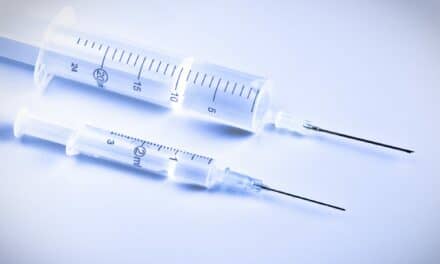Mallinckrodt plc announced the publication of findings from a retrospective chart review study assessing the real-world use and outcomes of INOmax inhaled nitric oxide for COVID-19 patients hospitalized with mild-to-moderate ARDS. The results of the study were published in the peer-reviewed journal Drugs in Context.
The retrospective, observational medical chart review study included patients who were at least 18 years old at the time of hospitalization, hospitalized for COVID-19, met the Berlin definition of ARDS,[1] received INOmax for at least 24 hours continuously during hospitalization and had a partial pressure of oxygen (PaO2)/fraction of inspired oxygen (FiO2) ratio (P/F ratio) >100 and ≤300mmHg when INOmax was initiated. A total of 213 patients were screened for enrollment from seven study sites across the US of which 37 patients met enrollment criteria. Patients were followed from COVID-19–related hospitalization up to 30 days post discharge or until loss to follow-up, and data were collected between October 1, 2020, and March 31, 2021. The most common reason for exclusion was severe ARDS with a P/F ratio ≤100 (N=146; 83 percent of excluded patients).[2]
The data analysis found that when response was defined as an increase in P/F ratio by >20% at any time after INOmax initiation, nearly two-thirds of patients (n=23; 62.2%) achieved response to INOmax. Additionally, mean P/F ratio (standard deviation) increased from 136.7 (34.4) at baseline to 140.3 (53.2) at 48 hours and 151.8 (50.0) at 72 hours after INOmax initiation (N=34). Median time to response was 3 days (interquartile range 1 to 3 days) after initiation of INOmax. In a sensitivity analysis, when response was defined as a ˃10 percent increase in P/F ratio, most (n=26; 70.3 percent) patients were categorized as responders. Among the 27 patients (73 percent) receiving invasive mechanical ventilation at the time of INOmax initiation, 4 (14.8 percent) were transitioned to non-invasive ventilation. No patient required extracorporeal membrane oxygenation (ECMO) after initiating INOmax. Data on select adverse events of interest were also collected (methemoglobinemia, airway injury and worsening pulmonary edema) and none were attributed to INOmax treatment. At discharge, 20 patients (54 percent) improved or remained stable according to the Clinical Global Impression–Improvement (CGI-I) scores.2
INOmax has been on the market in the U.S. since 2000 and is indicated to improve oxygenation and reduce the need for extracorporeal membrane oxygenation in term and near-term (>34 weeks gestation) neonates with hypoxic respiratory failure associated with clinical or echocardiographic evidence of pulmonary hypertension in conjunction with ventilatory support and other appropriate agents. Please see Important Safety Information below.
The safety and efficacy of INOmax to treat COVID-19 have not been evaluated, established or approved for use by the U.S. Food and Drug Administration.
“These findings of INOmax use in clinical practice may help us gain an understanding of the real-world use of different potential treatment approaches and outcomes in people suffering from mild-to-moderate ARDS, a historically understudied population,” said Steve Abman, M.D., lead study investigator and Professor of Pediatrics at the University of Colorado. “In severe cases of COVID-19, ARDS is a major cause of morbidity, making it critical to continue studying this at-risk underserved patient population.”
Study limitations include the retrospective nature of the study design and the use of data abstracted from medical charts of study patients. The accuracy and completeness of data in this study are limited by the availability and quality of data in each patient’s medical chart. Treatment patterns in the study reflect the use of INOmax for hospitalized COVID-19 patients in selected medical centers willing to participate in this retrospective medical chart study and may not be representative of all institutions using INOmax. The dosing and duration of INOmax treatment was variable across sites and determined at the attending physician’s discretion. Criteria for initiation of INOmax, INOmax weaning and weaning protocols were not standardized across sites. Detailed information was not collected about all potential interventions for the acute management of COVID-19 ARDS, including diuretics, vasopressors and prone positioning. Future randomized, placebo-controlled studies are needed to determine potential efficacy, safety and place in therapy. Due to the retrospective nature of this analysis, it is hypothesis-generating; no formal conclusions should be drawn.
“The results of this retrospective medical chart review analysis support the importance of continued collection of real-world data to help expand our understanding of the investigational use and potential of INOmax,” said Steven Romano, M.D., Executive Vice President and Chief Scientific Officer at Mallinckrodt.
inhaled nitric oxide for COVID-19
References
[1] Ranieri VM, Rubenfeld GD, Thompson BT, et al. Acute respiratory distress syndrome: the Berlin Definition. JAMA. Jun 20 2012;307(23):2526-33. https://doi:10.1001/jama.2012.5669.
[2] Abman SH, Fox NR, Malik MI, et al. Real-world use of inhaled nitric oxide therapy in patients with COVID-19 and
mild-to-moderate acute respiratory distress syndrome. Drugs in Context. 2022;11:2022-1-4. https://doi.org/10.7573/dic.2022-1-4.
[3] Adusumilli NC, Zhang D, Friedman JM, Friedman AJ. Harnessing nitric oxide for preventing, limiting and treating the severe pulmonary consequences of COVID-19. Nitric Oxide. Oct 1 2020;103:4-8. https://doi:10.1016/j.niox.2020.07.003.
[4] Matthay MA, Aldrich JM, Gotts, JE. Treatment for severe acute respiratory distress syndrome from COVID-19. Lancet Respir Med. 2020. Published Online March 20, 2020. https://doi.org/10.1016/S2213-2600(20)30127-2.ᐧ










